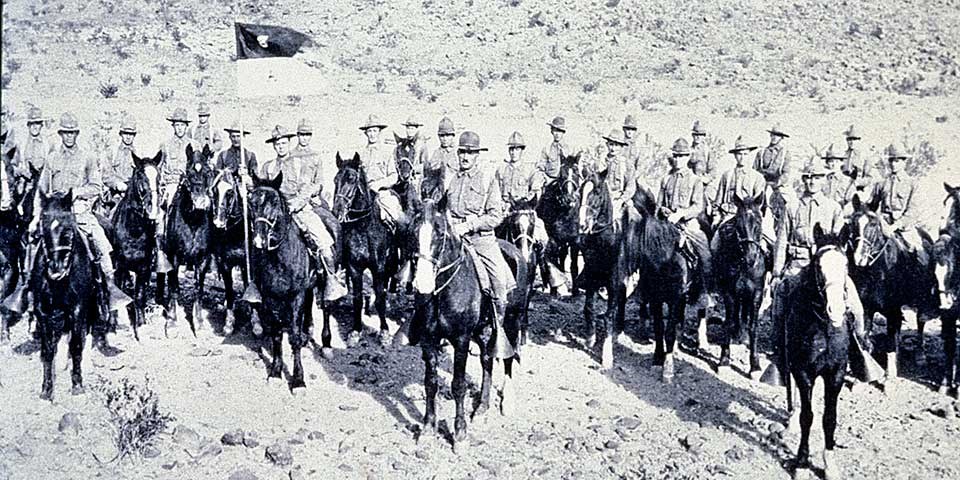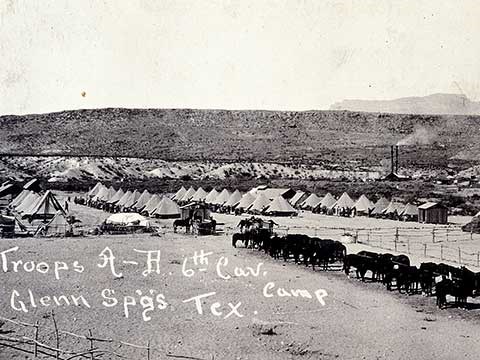Last updated: May 11, 2020
Article
Soldiers Along The Border

NPS Collection
The rugged terrain and isolation of Big Bend National Park make it an attractive escape for the 21st-century adventurer. Many years before the Big Bend became a national park in 1944, the region’s remoteness favored bandits and revolutionaries along the U.S.-Mexican border.

NPS Collection
Revolution In Mexico
The explosion of the Mexican Revolution in 1910-11 would engulf that country and spillover the Rio Grande into the Big Bend. Big Bend residents such as J.O. Langford, owner of the Hot Springs near Boquillas, grew nervous as banditry on both sides of the border intensified. Bandit leaders such as Chico Cano became infamous for daring raids, theft, and even murder. Until 1916 pleas by Langford and local ranchers for more federal protection were repeatedly turned down.
Border Raids & A Military Response
Federal intervention was eventually provoked in 1916. Following a raid on Columbus, New Mexico by Pancho Villa in March of that year, President Woodrow Wilson approved of a military expedition in pursuit of Villa which would be led by General “Black Jack” Perishing. Perishing’s nine-month chase of the elusive Villa in the state of Chihuahua, Villa’s homeland, was unsuccessful. In May 1916, a group of bandits raided the Glenn Springs village which held a wax factory owned by Captain C.D. Wood and Mr. W. Ellis. A firefight broke out late in the evening of May 5th as the nine soldiers posted in the village were quickly overrun by the larger group of raiders. The soldiers barricaded themselves in an adobe building and bravely fought off the bandits. The raiders eventually smoked out the entrenched soldiers by setting fire to the hut’s thatched ceiling. Three soldiers were killed in the battle and several more wounded. The son of the village’s storekeeper was also killed. Bandits looted goods and damaged many of the factory’s structures.
Army Build-up
Military presence in the Big Bend Military District swelled following the Glenn Springs raid. The region experienced a period of relative peace following the troop build-up, but the United States’ entry into World War I in 1917 forced the replacement of many army companies from the Big Bend to Europe. Bandit activity continued apace with troop withdrawal. Camp Santa Helena, now Castolon, was established as a permanent military post following the end of World War I. Air patrols of the Rio Grande also began in the early post-war period. DeHavilland-4 (DH-4) aircraft assisted ground cavalry in the pursuit of border bandits. The Army Air Service relayed messages to ground soldiers by dropping written messages from their perched positions. The effectiveness of aerial patrols, along with the end of the Mexican Revolution, allowed the Big Bend to return to a period of peace by 1920.
Remains Of History
Remnants of the Big Bend’s military history remain in the park today. Structures of the old wax factory and military encampments still stand near Glenn Springs. Visitors with high-clearance vehicles can visit this region and also camp in the nearby backcountry sites. 22 miles down the Ross Maxwell Scenic Drive visitors can see former barracks of Camp Santa Helena in present-day Castolon. Park Rangers can provide further recommendations for the history buff visitors.
